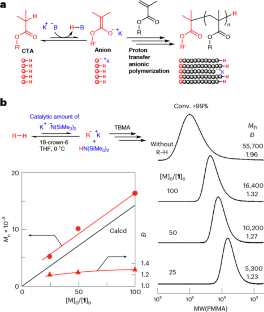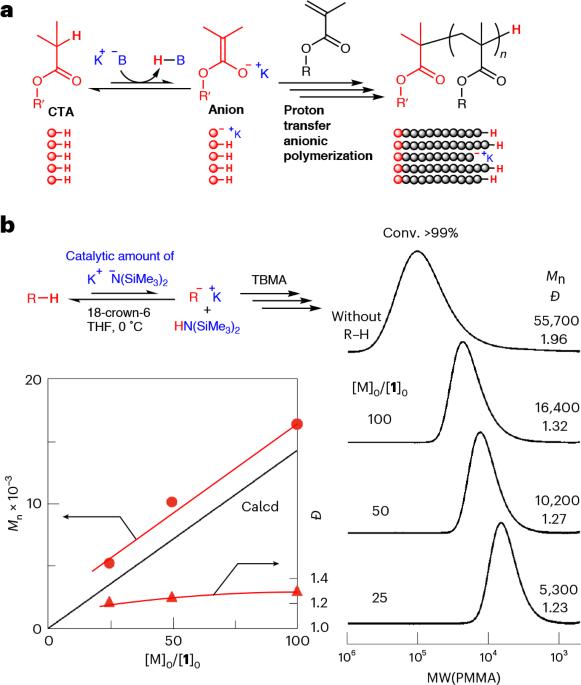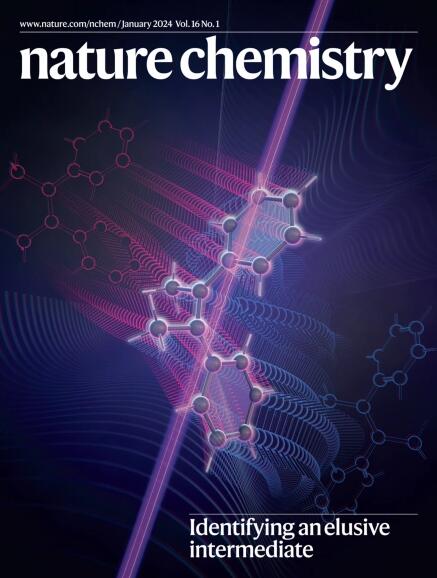通过碱催化剂对 C-H 键的可逆活化实现 "活 "阴离子聚合反应
IF 19.2
1区 化学
Q1 CHEMISTRY, MULTIDISCIPLINARY
引用次数: 0
摘要
活阴离子聚合通常是在严格和理想的无水条件下使用金属引发剂进行的。现在,质子传递阴离子聚合法在碱催化剂的作用下,使用具有酸性 C-H 键的有机化合物作为引发剂。这种方法可在温和的条件下轻松获得定义明确的聚合物。本文章由计算机程序翻译,如有差异,请以英文原文为准。


‘Living’ anionic polymerization through reversible activation of C–H bonds with a base catalyst
Living anionic polymerization is generally carried out using a metal-based initiator under stringent, and ideally water-free, conditions. Now, proton transfer anionic polymerization is developed using an organic compound with an acidic C–H bond as the initiator in the presence of a base catalyst. This method offers easy access to well-defined polymers under moderate conditions.
求助全文
通过发布文献求助,成功后即可免费获取论文全文。
去求助
来源期刊

Nature chemistry
化学-化学综合
CiteScore
29.60
自引率
1.40%
发文量
226
审稿时长
1.7 months
期刊介绍:
Nature Chemistry is a monthly journal that publishes groundbreaking and significant research in all areas of chemistry. It covers traditional subjects such as analytical, inorganic, organic, and physical chemistry, as well as a wide range of other topics including catalysis, computational and theoretical chemistry, and environmental chemistry.
The journal also features interdisciplinary research at the interface of chemistry with biology, materials science, nanotechnology, and physics. Manuscripts detailing such multidisciplinary work are encouraged, as long as the central theme pertains to chemistry.
Aside from primary research, Nature Chemistry publishes review articles, news and views, research highlights from other journals, commentaries, book reviews, correspondence, and analysis of the broader chemical landscape. It also addresses crucial issues related to education, funding, policy, intellectual property, and the societal impact of chemistry.
Nature Chemistry is dedicated to ensuring the highest standards of original research through a fair and rigorous review process. It offers authors maximum visibility for their papers, access to a broad readership, exceptional copy editing and production standards, rapid publication, and independence from academic societies and other vested interests.
Overall, Nature Chemistry aims to be the authoritative voice of the global chemical community.
 求助内容:
求助内容: 应助结果提醒方式:
应助结果提醒方式:


